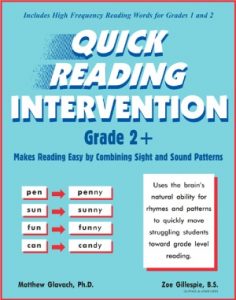Quick Read Fluency Program For Young
With an understanding of what fluency is and how to assess it, let's turn to the questions that teachers are always most interested in: What should fluency instruction look like? Peachtree Accounting 2013 Serial Number more. And, what can I do to help students whose fluency is far behind their peers'? Research over the past two decades has identified repeated reading as the key strategy for improving students' fluency skills (NICHD, 2000). Repeated reading has two essential elements: 1) Giving students the opportunity to read and then re-read the same text, and 2) having students practice their reading orally with an opportunity to receive corrections and guidance (if necessary).
Fifteen years after the National Reading Panel identified it as a pillar of reading instruction, fluency. Fluency Viewed as Neglected Skill. Young readers. Teaching Teens Who Struggle With Reading. Helping With Fluency. Struggling teens read. Hear from a young woman with a nonverbal learning disability on her. Improve your child's reading fluency by helping her learn to read faster and more accurately. These strategies can help with fluency and reading skills. Model fluent reading. Read to your child to show what fluent reading sounds like. Choose stories and books that will interest her. Read naturally, with the right emotion. There are many students who can read quickly and still have great comprehension. However, many students are unable to read faster than a normal speaking speed without losing some comprehension. I am not speaking only of young or struggling readers here. I know many academically advanced high schoolers, college.

Research has also determined that having students read aloud along with a model of well-paced, expressive reading and receiving specific feedback through systematic progress monitoring also helps improve students' fluency skills. So, what are the best methods to use in the classroom to help students become fluent? The answer depends on whether the student is just beginning to read, has learned to read and is making adequate progress, or is struggling.
Let's start with beginning readers, those students in kindergarten and grade one. Teaching beginning readers to become fluent Because accuracy is a fundamental component of fluency, teachers who work with beginning readers must focus significant amounts of instructional time on basic word recognition and word analysis skills (Pikulski and Chard, 2005). To do this effectively, teachers should provide instruction that systematically presents daily opportunities for students to learn to read words accurately (Snow, Burns, and Griffith, 1998)-the important first step in becoming a skillful, proficient, and motivated reader. Pushing students to 'read faster' too soon could cause some students to begin guessing or otherwise undermine their focus on reading carefully.
There is no guidance from empirical research about precisely when teachers should formally begin encouraging beginning readers to increase their speed, but teachers usually wait until about the middle of first grade. Fluency researchers Stahl and Kuhn (2002) recommend that students be given opportunities to re-read sentences and encouraged to make their reading 'sound like talking' as soon as they are making good progress with basic decoding, demonstrating an understanding of the act of reading, and showing some degree of confidence-whether that happens in kindergarten or in first grade. Teachers and parents should also frequently model fluent reading, demonstrating (and sometimes explicitly pointing out) how accurate reading can be done at a reasonable rate and with good phrasing, intonation, and expression. In the classroom, the teacher can read aloud from large-format books so the students can follow along. Maintaining reading fluency for on-level readers What about students in grades two and higher who are making adequate progress with their reading? Three techniques can be used very frequently with a variety of texts to help maintain and develop students' reading fluency: Choral reading, cloze reading, and partner reading.
All of these procedures can be used with readers at any grade level, with small or large groups, and with fiction or content-heavy nonfiction materials. Two additional techniques can also be considered for use: Readers' Theater and poetry readings. Let's review each. For choral reading, the teacher and students read aloud together, following the teacher's pace-so students get the benefit of a model while they practice reading aloud. The teacher can stop at any time to ask questions, comment on the text, discuss a vocabulary term, or remind the class that she expects everyone to be reading.
If choral reading is used with heterogeneously grouped students, it is possible that the lowest performing students may have difficulty keeping up with even a moderate pace. However, they can follow along, participating when they can, and still hear the text being read accurately and with good pacing and phrasing.